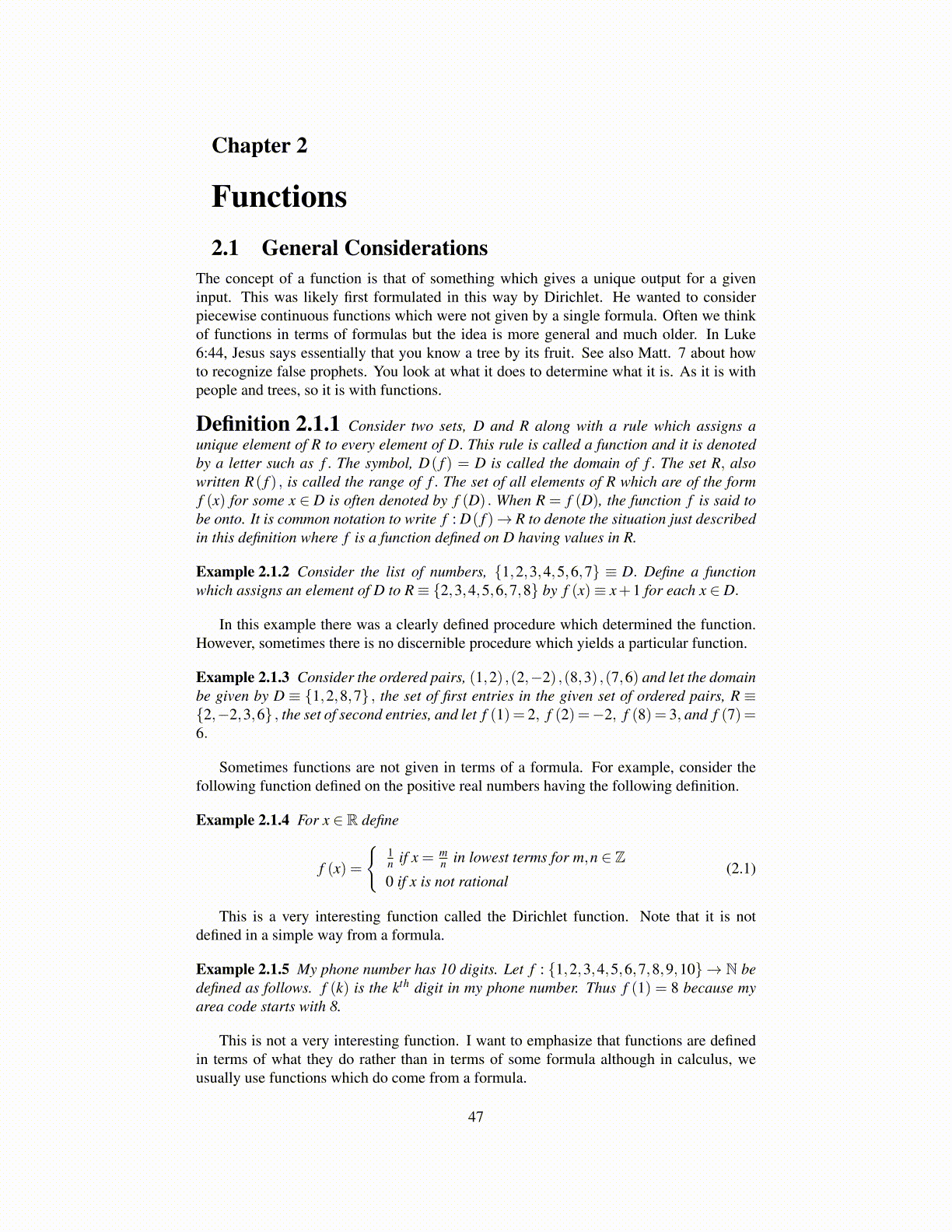
Chapter 2
Functions2.1 General Considerations
The concept of a function is that of something which gives a unique output for a giveninput. This was likely first formulated in this way by Dirichlet. He wanted to considerpiecewise continuous functions which were not given by a single formula. Often we thinkof functions in terms of formulas but the idea is more general and much older. In Luke6:44, Jesus says essentially that you know a tree by its fruit. See also Matt. 7 about howto recognize false prophets. You look at what it does to determine what it is. As it is withpeople and trees, so it is with functions.
Definition 2.1.1 Consider two sets, D and R along with a rule which assigns aunique element of R to every element of D. This rule is called a function and it is denotedby a letter such as f . The symbol, D( f ) = D is called the domain of f . The set R, alsowritten R( f ) , is called the range of f . The set of all elements of R which are of the formf (x) for some x ∈ D is often denoted by f (D) . When R = f (D), the function f is said tobe onto. It is common notation to write f : D( f )→ R to denote the situation just describedin this definition where f is a function defined on D having values in R.
Example 2.1.2 Consider the list of numbers, {1,2,3,4,5,6,7} ≡ D. Define a functionwhich assigns an element of D to R ≡ {2,3,4,5,6,7,8} by f (x)≡ x+1 for each x ∈ D.
In this example there was a clearly defined procedure which determined the function.However, sometimes there is no discernible procedure which yields a particular function.
Example 2.1.3 Consider the ordered pairs, (1,2) ,(2,−2) ,(8,3) ,(7,6) and let the domainbe given by D ≡ {1,2,8,7} , the set of first entries in the given set of ordered pairs, R ≡{2,−2,3,6} , the set of second entries, and let f (1) = 2, f (2) =−2, f (8) = 3, and f (7) =6.
Sometimes functions are not given in terms of a formula. For example, consider thefollowing function defined on the positive real numbers having the following definition.
Example 2.1.4 For x ∈ R define
f (x) =
{1n if x = m
n in lowest terms for m,n ∈ Z0 if x is not rational
(2.1)
This is a very interesting function called the Dirichlet function. Note that it is notdefined in a simple way from a formula.
Example 2.1.5 My phone number has 10 digits. Let f : {1,2,3,4,5,6,7,8,9,10} → N bedefined as follows. f (k) is the kth digit in my phone number. Thus f (1) = 8 because myarea code starts with 8.
This is not a very interesting function. I want to emphasize that functions are definedin terms of what they do rather than in terms of some formula although in calculus, weusually use functions which do come from a formula.
47